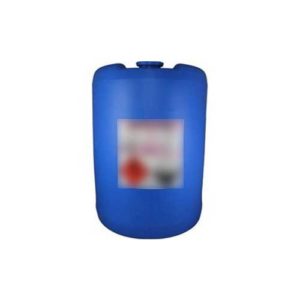N-HEPTANE-C7H16
ABOUT:
N-Heptane can be manufactured through several processes, including crude oil refining and fractional distillation.
Refining: Crude oil contains various hydrocarbons, including n-heptane, which can be separated from other components through refining processes such as distillation, cracking, and hydrotreating.
Fractional distillation: N-Heptane can be isolated from a mixture of hydrocarbons through fractional distillation, which separates components based on their boiling points. The process involves heating the mixture in a distillation column and collecting the fraction with a boiling point range of 90-110°C, which corresponds to n-heptane.
Isomerization: N-Heptane isomers, such as 2-methylhexane and 3-methylhexane, can be produced through isomerization processes. The process involves converting straight-chain hydrocarbons into branched-chain isomers through catalytic reactions.
Alkylation: N-Heptane can be synthesized through the alkylation of butene with ethylene, followed by hydrogenation of the resulting product. This method is less common than the previous ones.
PHYSICAL PROPERTIES:
Molecular weight: 100.2 g/mol
Boiling point: 98.4°C (209°F)
Melting point: -91.7°C (-133.1°F)
Density: 0.683 g/cm3 at 20°C (68°F)
Viscosity: 0.36 cP at 25°C (77°F)
Flash point: -4°C (25°F)
Autoignition temperature: 215°C (419°F)
CHEMICAL PROPERTIES:
- Insoluble in water, but soluble in common organic solvents such as ethanol, diethyl ether, and chloroform.
- n-heptane is a straight-chain alkane consisting of seven carbon atoms and 16 hydrogen atoms bonded together by single covalent bonds.
- n-heptane is a relatively inert compound with low chemical reactivity due to the strength of its C-C and C-H bonds. It is relatively unreactive towards acids, bases, and oxidizing agents.
- n-heptane is highly flammable and burns readily in air, producing carbon dioxide and water vapor.
- n-heptane is a hydrophobic compound, meaning it does not dissolve in water due to its nonpolar nature.
- n-heptane is a stable compound under normal conditions, but can react with strong oxidizing agents to form peroxides, which can be explosive.
- n-heptane has six isomers, including 2-methylhexane, 3-methylhexane, 2,2-dimethylpentane, 2,3-dimethylpentane, 2,4-dimethylpentane, and 3,3-dimethylpentane.
APPLICATIONS:
EXTRACTION OF VARIOUS COMPOUNDS FROM PLANT AND ANIMAL MATERIALS:
- The nonpolar nature of n-heptane makes it useful in selectively dissolving the nonpolar oils and leaving behind other components.
- N-Heptane is used in the extraction of flavor and fragrance compounds from plant materials, such as citrus peels or lavender flowers.
- Pesticides and herbicides are extracted from environmental materials like soil or water using n-hexane. Due to n-low heptane’s polarity, nonpolar molecules can be selectively extracted and studied for use in environmental monitoring.
CHEMICAL SYNTHESIS:
- N-Heptane is used as a solvent in the synthesis of polymers, such as polyethylene, polypropylene, and polystyrene.
- Metal-catalyzed hydrogenation and oxidation processes, among other reactions, require n-heptane as a solvent for ligands and catalysts.
CLEANING AGENT:
- N-Heptane is used as a cleaning solvent in the electronics industry to remove flux residues, oils, and other contaminants from printed circuit boards and other electronic components.
- Textiles can be dry cleaned with n-heptane, which is especially useful for fragile fabrics that cannot be cleaned using water-based solvents.
- To clean oils and other impurities from laboratory glassware that can affect studies, n-hexane is employed as a solvent.
FUEL INDUSTRY:
- To make gasoline blends with particular features, such as greater fuel efficiency, decreased emissions, and increased stability, N-heptane is blended with other hydrocarbons, such as iso-octane and aromatic compounds.
- N-Heptane is used as a reference compound for measuring the octane rating of gasoline.
PETROCHEMICAL INDUSTRY:
- In the petrochemical industry, n-heptane is employed as a solvent for hydrocarbons, oils, and other organic substances. The extraction of aromatics and other valuable compounds from crude oil and other petroleum products makes it particularly useful.
RUBBER INDUSTRY:
- When rubber is vulcanised, n-heptane is utilised as a solvent. To increase the rubber’s tensile strength, durability, and other qualities, vulcanization involves heating the rubber with sulphur or other cross-linking agents.
- N-Heptane is used in rubber testing to measure the hardness, abrasion resistance, and other properties of various rubber compounds.
SAFETY MEASURES:
- Use in well-ventilated areas: N-Heptane should only be used in well-ventilated areas with adequate airflow to prevent the buildup of flammable vapors.
- Use appropriate personal protective equipment: When handling n-heptane, appropriate personal protective equipment should be worn, including gloves, eye protection, and a lab coat.
- Keep away from sources of ignition: N-Heptane should be kept away from sources of ignition, such as flames, sparks, and heat sources.
- Store properly: N-Heptane should be stored in a cool, dry place in a tightly sealed container away from sources of heat and ignition.
- Handle with care: N-Heptane should be handled with care to avoid spills or splashes. In case of a spill or leak, absorb the liquid with appropriate absorbents and dispose of them properly.
- Do not ingest: N-Heptane should not be ingested or inhaled, as it can be harmful or even fatal. In case of ingestion or inhalation, seek medical attention immediately.






Reviews
There are no reviews yet.